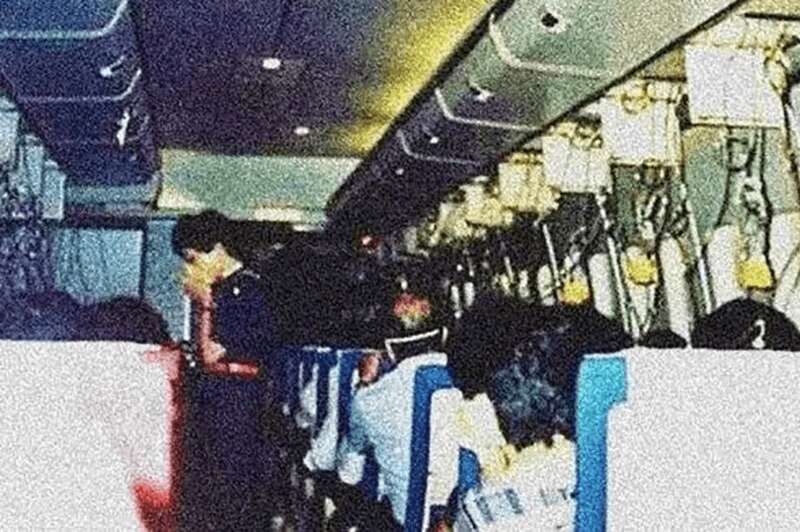A CHILLING image showing the final moments before the world's worst single-jet crash has surfaced - almost four decades later.
The grainy photograph taken on board the fatal Japan Air Lines Flight shows an air stewardess standing in the aisle holding an oxygen mask to her face.




To this day, the Japanese Air Lines Boeing 747 from Tokyo to Osaka on August 12, 1985, which only had four survivors, remains the world's deadliest single-jet crash.
It is thought that the flight began normally, with 509 passengers and 15 members of crew boarding the plane, unaware of the horror that was to follow.
The plane had already been flown four times that day, and no concerns had been reported.
 Andrew Tate 'tried to lure ex-Playboy model to Romanian lair' before his arrest
Andrew Tate 'tried to lure ex-Playboy model to Romanian lair' before his arrest
But just minutes after taking off, Captain Masami Takahama and First Officer Yutaka Sasaki felt a tremor rip through the aircraft.
The jet quickly started to decompress, the ceiling began caving in by the rear toilets, the fuselage was damaged, the vertical stabiliser completely destroyed, and all four hydraulic lines were severed.
The air condensed into a fog and forced the oxygen masks to drop down seconds after the tremor was felt.
In the midst of the chaos and confusion sweeping through the cabin, a passenger somehow managed to take a photo of these final moments, as the flight crew fought to keep the 747 airborne.
Captain Takahama is reported to have used the engine thrust to ascend and descend in a desperate attempt to keep the plane level.
After 32 minutes of battling, Takahama realised the damage was too severe and the 747 started to spiral.
The fatal Japanese Air Lines flight had been locked into a phugoid cycle - where an aircraft dives thousands of feet before the nose points up and the plane ascends again.
The vicious and dizzying cycle saw the plane diving and then rising for just under 30 minutes.
Passengers screamed as they were thrust around the plane by the violent spiralling, while the pilots continued to fight to manoeuvre the plane to safety.
Takahama is thought to have yelled: "This is the end!"
 Inside US's most remote town 2.4 miles from Russia where only 77 people live
Inside US's most remote town 2.4 miles from Russia where only 77 people live
Not long after, the tragic 747 crashed into a ridge on Mount Osutaka, just 62 miles northwest of Tokyo.
Around 20 minutes after impact, US Air Force serviceman Michael Antonucci reported the crash location.
Instead of sending a rescue team, Japanese authorities held off on the presumption that no one had survived, and ordered Antonucci not to talk about the crash.
The Japanese military sent the rescue teams in the following morning, a full 12 hours after the crash had been reported.
As Antonucci revealed ten years later: "Four people survived. Many more could have.
"At the time it occurred, I was ordered not to speak about it."
One doctor who was involved in the rescue mission said: "If the discovery had come 10 hours earlier, we could have found more survivors."
While survivor Yumi Ochiai said that she could hear other survivors screaming throughout the night, until they died from the bitter cold.
Antonucci added that had it "not been for efforts to avoid embarrassing Japanese authorities", a team of US Marines could have searched the wreckage less than two hours after the crash.
As further teams were sent in to recover body and plane parts, the pieces of the puzzle started coming together.
Two years later, after thorough investigation, Japan's Aircraft Accident Investigation Commission officially concluded that the decompression was caused by a faulty repair by Boeing technicians.
The same plane had thudded heavily upon landing in Itami Airport on June 1978, resulting in severe tail damage.
The impact also cracked open the pressure bulkhead, which needed urgent repairs.
But Boeing's repair technicians used two spice plates parallel to the crack in the bulkhead, instead of one, meaning that the repair job was ineffective.
Ron Schleede, a member of the US National Transportation Safety Board, said that the crew did everything they could, adding that the crash was "inevitable".






































